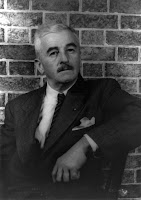
In this era of technology and social media, marketing, and getting an author platform built have you ever wondered when too much is too much? A quote above my desk by famous author William Faulkner reads: Don't be a "writer"... Be writing. Note he doesn't say marketing, selling, promoting, or any of the other social media activity that an author must do to get noticed but the simple quote does cause me to ponder.
And this is what I ponder.
- What do I promote if I haven't written a word?
- How do I market myself as a writer if I haven't written?
- Can I develop a platform if all the words are in my head and not on the page?
I believe that marketing, selling, and self promotion are all absolutely necessary to being a successful author. Without a doubt social media has taken an important role in getting an author platform built around the talent of any author. But I also believe there must be words on the page before the hype or the author will be seen as less than substantial and their platform will be weak. To be an author with integrity and one that your target audience will love and follow you must write and continue to write.
Many authors write a blog, small filler pages, and short articles at first. These small steps are what you start with to build a strong platform and to keep your target audience interested in what you write next. These small efforts many times lead to building a strong book project or instructional products for your target audience. In the fiction arena, short -short stories may lead to longer stories that draw your audience in. All of these efforts are action steps necessary for the social build up you seek.
Regardless of the type of writing you do, social media will be a part of the process but keep in mind it can also be too much. Here are a couple of things to keep in mind when deciding if social media is taking too much of your time.
- If your time online socializing keeps you from writing, then think about what it is you are trying to accomplish. Social media sites can be very distracting and be a huge time waster.
- If you check your emails for half a day, eat lunch, and check Facebook until dinner and find yourself still in your pj's, you may be spending too much time socializing and not enough time writing. Make your time on social media directly relate to your current writing project or promoting a published work.
- Use an egg timer or alarm to limit your time on social media. Another way to keep your time on social media in check is to schedule one or two days a week for marketing and social media tasks and reserve the other days for only writing.
How do you rate your writing effort? If William Faulkner would show up at your door would he recognize you as a writer because you are actually writing or would he mistake you for a wanna be?
Terri Forehand is the author of The ABC's of Cancer According to Lilly Isabella Lane and The Cancer Prayer Book for adults. She writes from her home in the hills of Brown County, Indiana. Visit her website at www.terriforehand.webnode.com or http://terri-forehand.blogspot.com



















